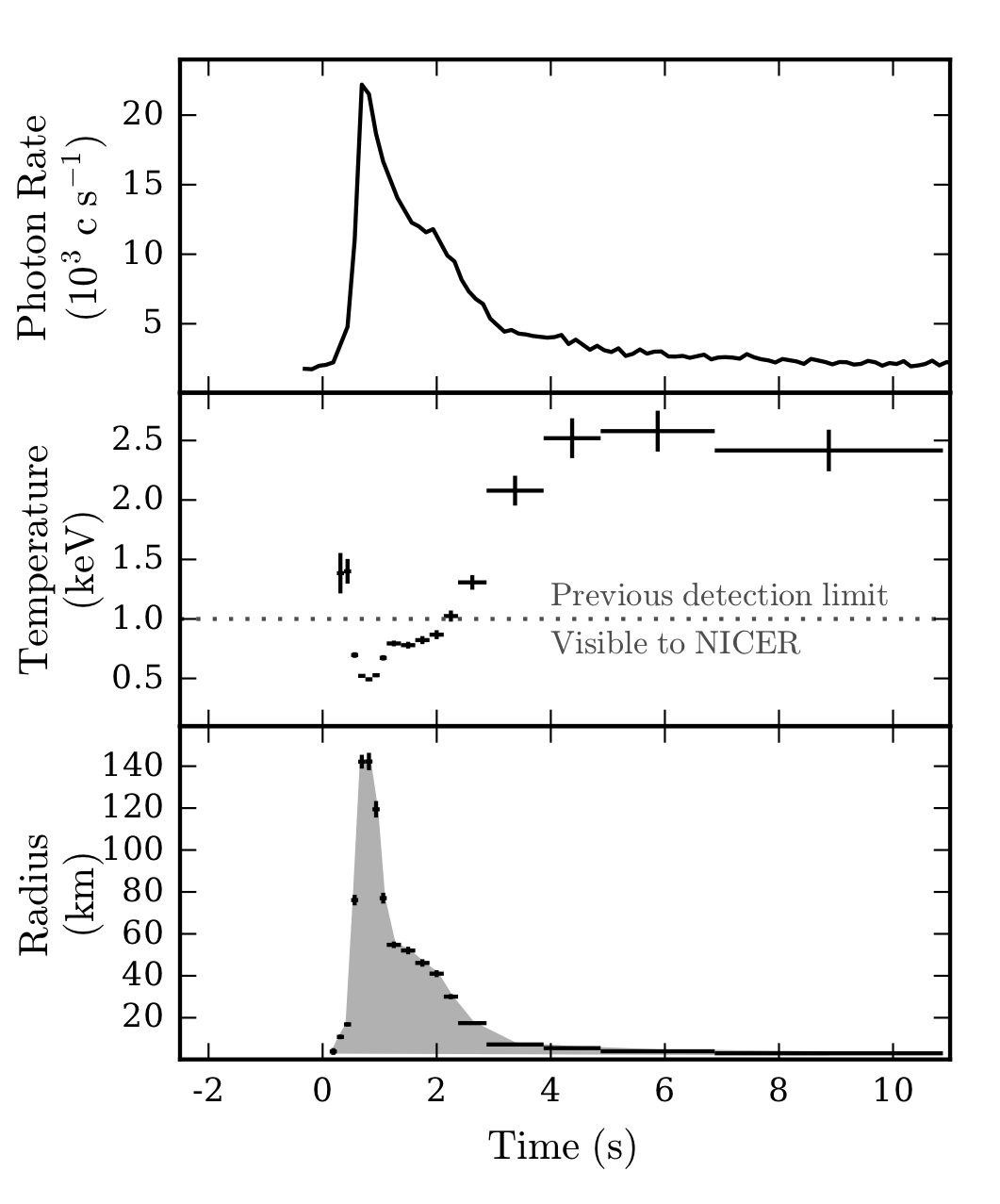NICER / ISS Science Nugget for October 13, 2017NICER Sees Neutron Star Superexpansion Burst in Unprecedented DetailThe extreme gravity on neutron stars is sufficiently strong to induce nuclear fusion of light elements on the stellar surface. Once ignited, thermonuclear flames wrap around the star within seconds, powering a bright burst of X-ray emission that lasts a comparable time. On August 29th, NICER on the ISS detected such a burst (top panel- attached figure) from the binary star system 4U 1820-30, which resides at a distance of 20,000 light years in the star cluster NGC 6624 in our Galaxy. The system's orbital period is just 11 minutes. This was an exceptionally bright event, with peak photon rate several times higher than for regular bursts. From the spectrum of photon energies measured in very fine time bins, we can derive the evolution of the temperature and radius of the star's surface (middle and bottom panels). For regular bursts, the nuclear burning heats up the star but the strong gravity confines the burning material to the surface, at a nominal radius of about 10 km. In this so-called "superexpansion" burst, we see the star's surface expand to over 140 km radius at a rate in excess of 500 km/s: despite the extreme gravity, the thermonuclear burst ejects the top layer of the neutron star. When the radius of this shell increases, its temperature decreases, such that the total brightness remains constant. The onset of a superexpansion burst had been seen previously with NASA's Rossi X-ray Timing Explorer, but that telescope's sensitivity was such that it lost the signal when the temperature dropped below 1 keV – it was unable to detect the peak of the expansion, making our NICER observation a first. Furthermore, superexpansion bursts are rare, and this spectacular observation was made possible by NICER's flexibility to quickly schedule observations of this star at the appropriate time.
Currently, we are studying the burst spectrum for signatures of nuclear ashes that may constrain the mass-to-radius ratio of the neutron star. NICER
|



